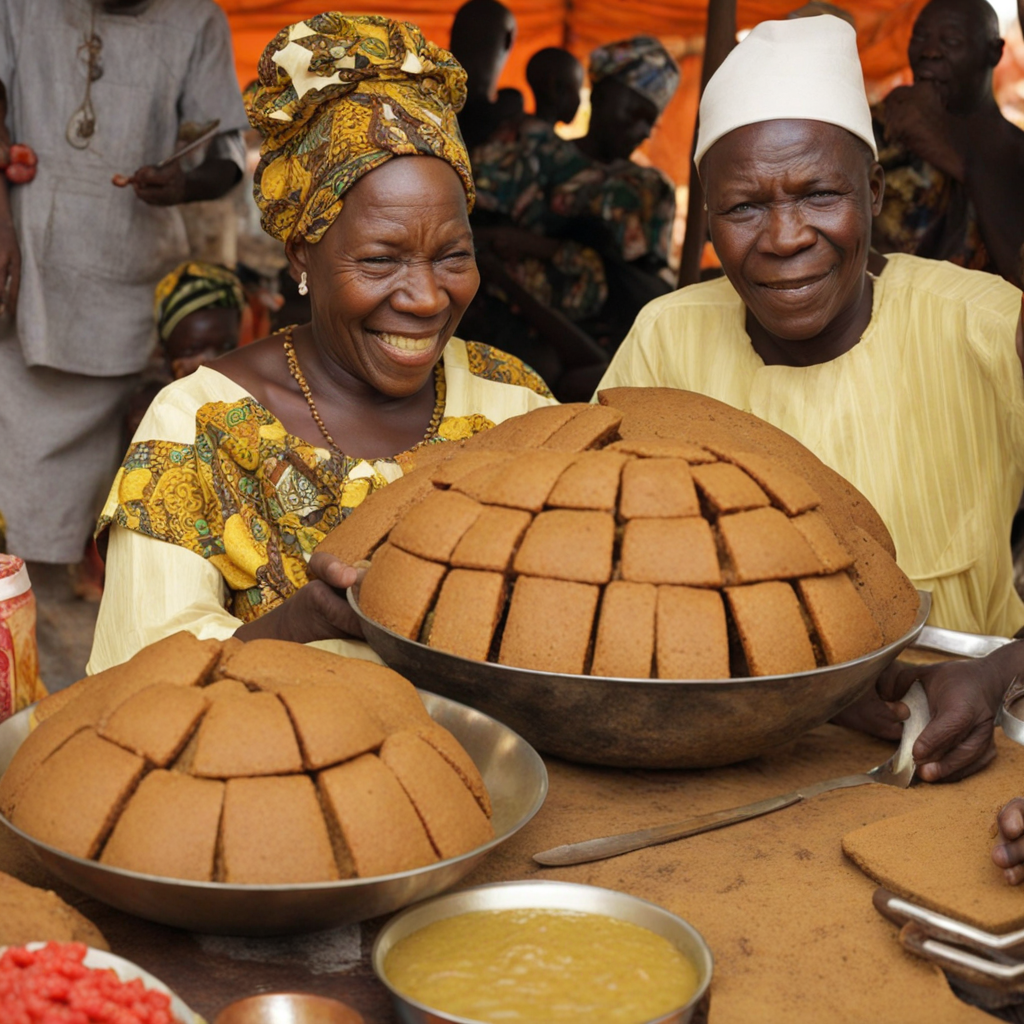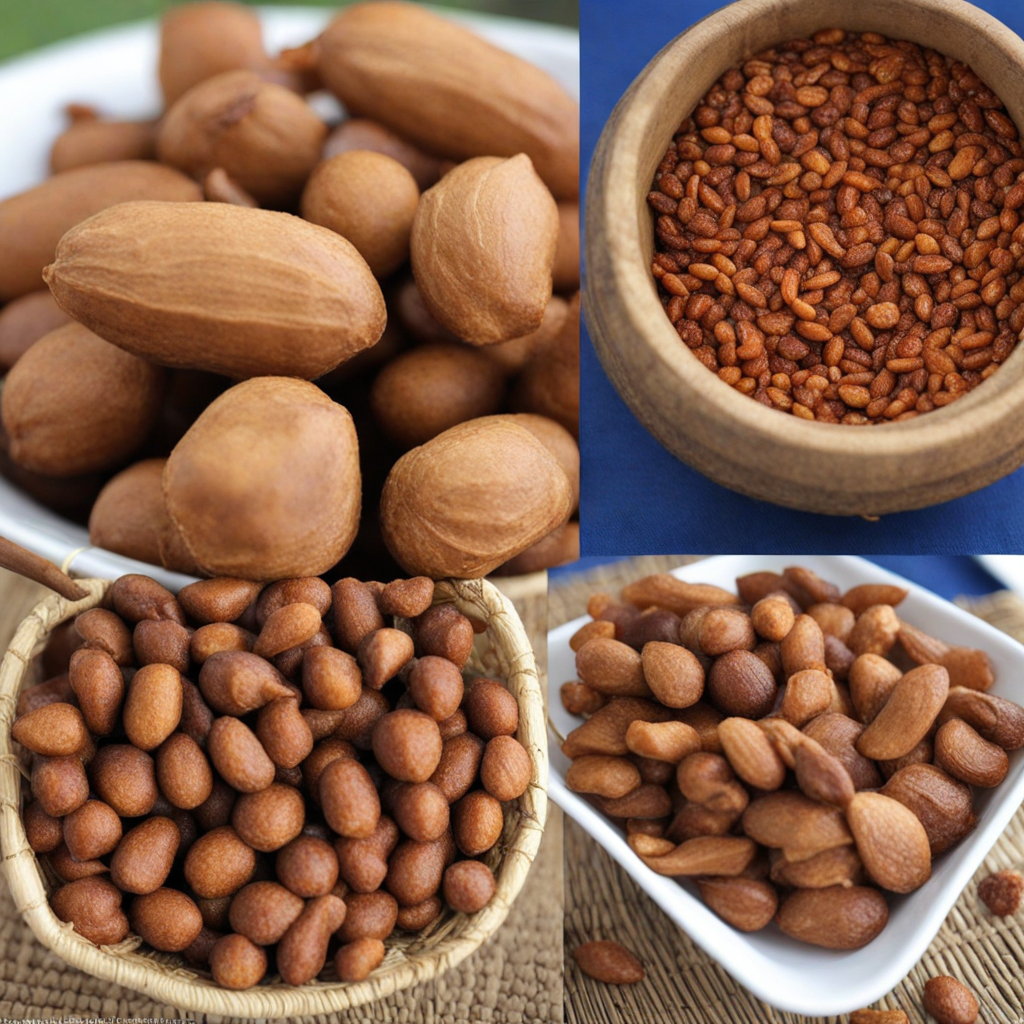Kokonte
Kokonte is a traditional dish from Benin, often referred to as "dried yam flour." This staple food is made from yam that is peeled, cooked, and then sun-dried before being ground into a fine powder. The resulting flour is mixed with hot water to create a thick, dough-like consistency, which is then shaped into balls or served in a more solid form. The texture of Kokonte is unique, with a slightly chewy quality that makes it a comforting and satisfying dish to enjoy. Kokonte is typically served with a variety of sauces and stews, making it incredibly versatile. It can be paired with spicy tomato-based sauces, rich groundnut (peanut) sauces, or even leafy vegetable stews, allowing for a delightful explosion of flavors. The mild taste of Kokonte acts as a perfect canvas, absorbing the rich and spicy flavors of the accompanying dishes, making every bite an experience filled with warmth and depth. This dish is more than just a meal; it embodies the cultural heritage of Benin, often enjoyed during family gatherings and celebrations. Kokonte is not only filling but also nutritious, providing a good source of carbohydrates and energy. It's a wonderful way to explore the culinary traditions of West Africa, offering a taste that is both unique and representative of the region's rich agricultural practices and flavors.
How It Became This Dish
The History of Kokonte: A Culinary Treasure of Benin Kokonte is a traditional dish that holds a special place in the culinary landscape of Benin, a country in West Africa. Made primarily from dried and powdered cassava, Kokonte is often referred to as “the food of the poor,” yet it carries a rich history and cultural significance that transcends this label. The dish exemplifies the resilience and ingenuity of the people of Benin, as well as their deep connection to the land and their agricultural practices. #### Origins The roots of Kokonte can be traced back to the indigenous peoples of West Africa, where cassava has been cultivated for centuries. Native to South America, cassava was brought to Africa by Portuguese traders in the 16th century. The crop thrived in the tropical climates of West Africa, where it became a staple food due to its resilience and ability to grow in poor soil conditions. This adaptability allowed cassava to become a significant source of calories, particularly in regions where other crops struggled to flourish. Kokonte itself emerged as a practical solution to food preservation and storage. The process of making Kokonte involves peeling and washing cassava tubers, then boiling and fermenting them before drying them in the sun. Once dried, the cassava is ground into a fine powder. This method not only extends the shelf life of the cassava but also transforms it into a versatile ingredient that can be reconstituted with water to form a thick, dough-like consistency. The preparation of Kokonte is labor-intensive, requiring skill and knowledge passed down through generations. #### Cultural Significance In Benin, Kokonte is more than just food; it is a symbol of cultural identity and resilience. Traditionally, it has been associated with communal gatherings and celebrations. During festivals, weddings, and other significant occasions, Kokonte is often served alongside soups and stews, showcasing its versatility and ability to complement a variety of dishes. The preparation of Kokonte is often a communal activity, bringing families and communities together to share in the labor and the joy of cooking. Kokonte also holds historical significance as a food of sustenance during difficult times. During periods of famine or economic hardship, the resilience of the people has been reflected in their ability to rely on Kokonte as a source of nourishment. The dish embodies the spirit of survival, creativity, and resourcefulness that characterizes the people of Benin. Moreover, Kokonte is often associated with the concept of “home,” evoking memories of childhood and family. For many Beninese, the taste and smell of Kokonte evoke feelings of nostalgia and belonging, reinforcing its role as a comfort food that transcends generations. #### Development Over Time As Benin has evolved, so too has Kokonte. The dish has adapted to changing agricultural practices, economic conditions, and dietary preferences. While cassava remains the primary ingredient, variations of Kokonte have emerged that incorporate other local ingredients, such as vegetables or proteins, to enhance flavor and nutritional value. The rise of urbanization and globalization has also influenced the consumption and preparation of Kokonte. In urban areas, the convenience of ready-to-eat meals has led to a decline in traditional cooking methods. However, there has been a resurgence of interest in traditional foods, driven by a growing appreciation for local culinary heritage and the health benefits of traditional diets. This revival has been supported by government initiatives and non-governmental organizations aimed at promoting food security and sustainable agricultural practices. Kokonte is increasingly being recognized beyond the borders of Benin. It has gained attention from food enthusiasts and chefs who are exploring African cuisine on a global stage. This newfound interest has led to innovative interpretations of Kokonte, with chefs experimenting with different cooking techniques and flavor profiles, while still honoring its traditional roots. #### Modern-Day Kokonte Today, Kokonte continues to be a staple food in Benin, enjoyed by people from all walks of life. It is often served with various sauces and stews, such as groundnut sauce, palm nut soup, or vegetable stews, which enhance its flavor and provide a balanced meal. The dish is not only prevalent in homes but also in restaurants and food markets, where it is celebrated for its affordability and nutritional value. The popularity of Kokonte has also sparked interest among the diaspora, with Beninese communities around the world seeking to preserve their culinary traditions. In cities with significant West African populations, Kokonte can often be found in specialty grocery stores and restaurants, serving as a bridge between generations and a reminder of home for those living abroad. #### Conclusion Kokonte is more than just a dish in Benin; it is a testament to the cultural heritage and resilience of its people. As it continues to evolve and adapt to modern circumstances, Kokonte remains a beloved staple that connects generations, communities, and cultures. Its enduring legacy is a reflection of the rich agricultural traditions and culinary practices that define West African cuisine. As the world increasingly embraces diverse culinary experiences, Kokonte stands as a proud representative of Benin's rich history and cultural identity, inviting all to savor its unique flavors and story.
You may like
Discover local flavors from Benin







